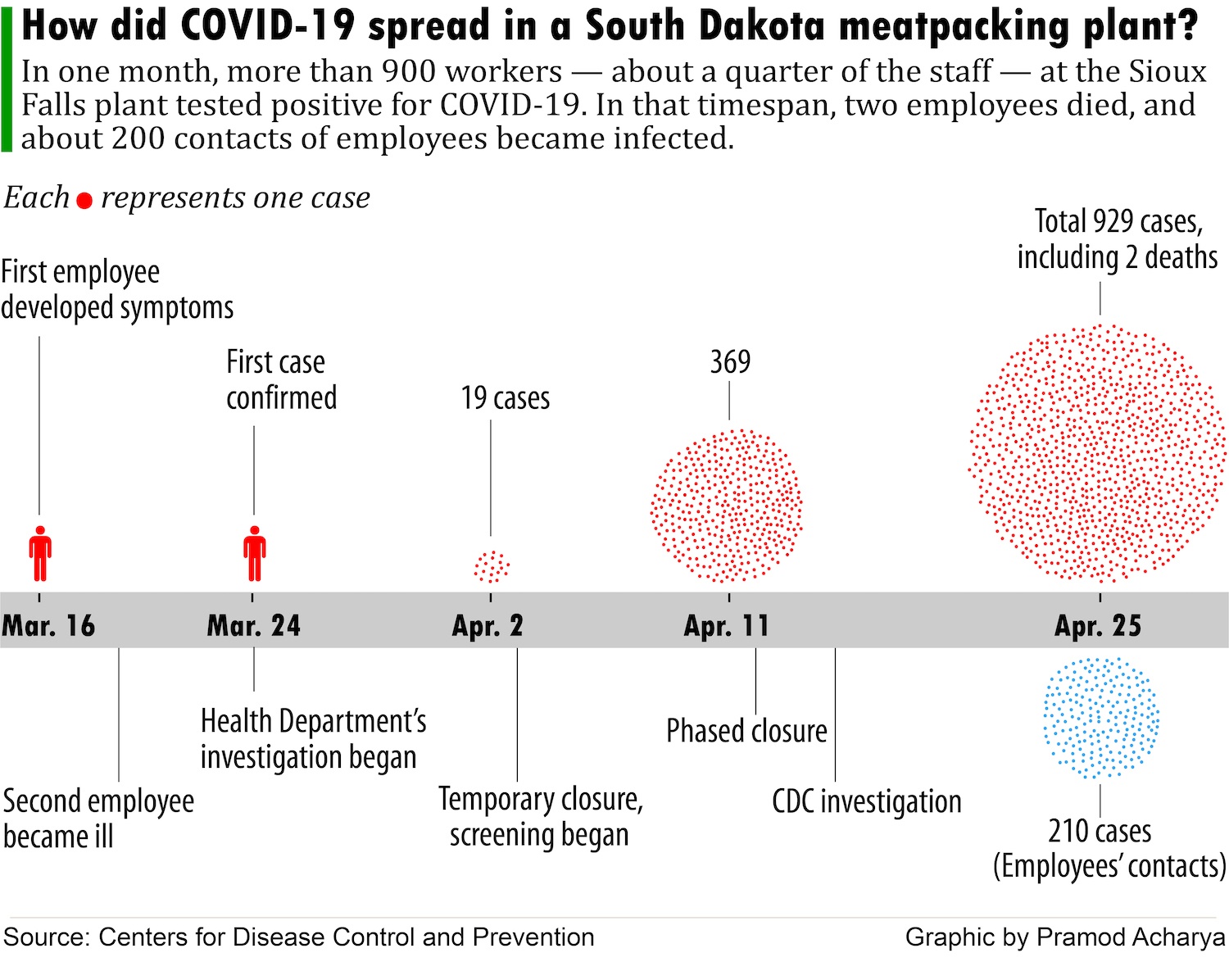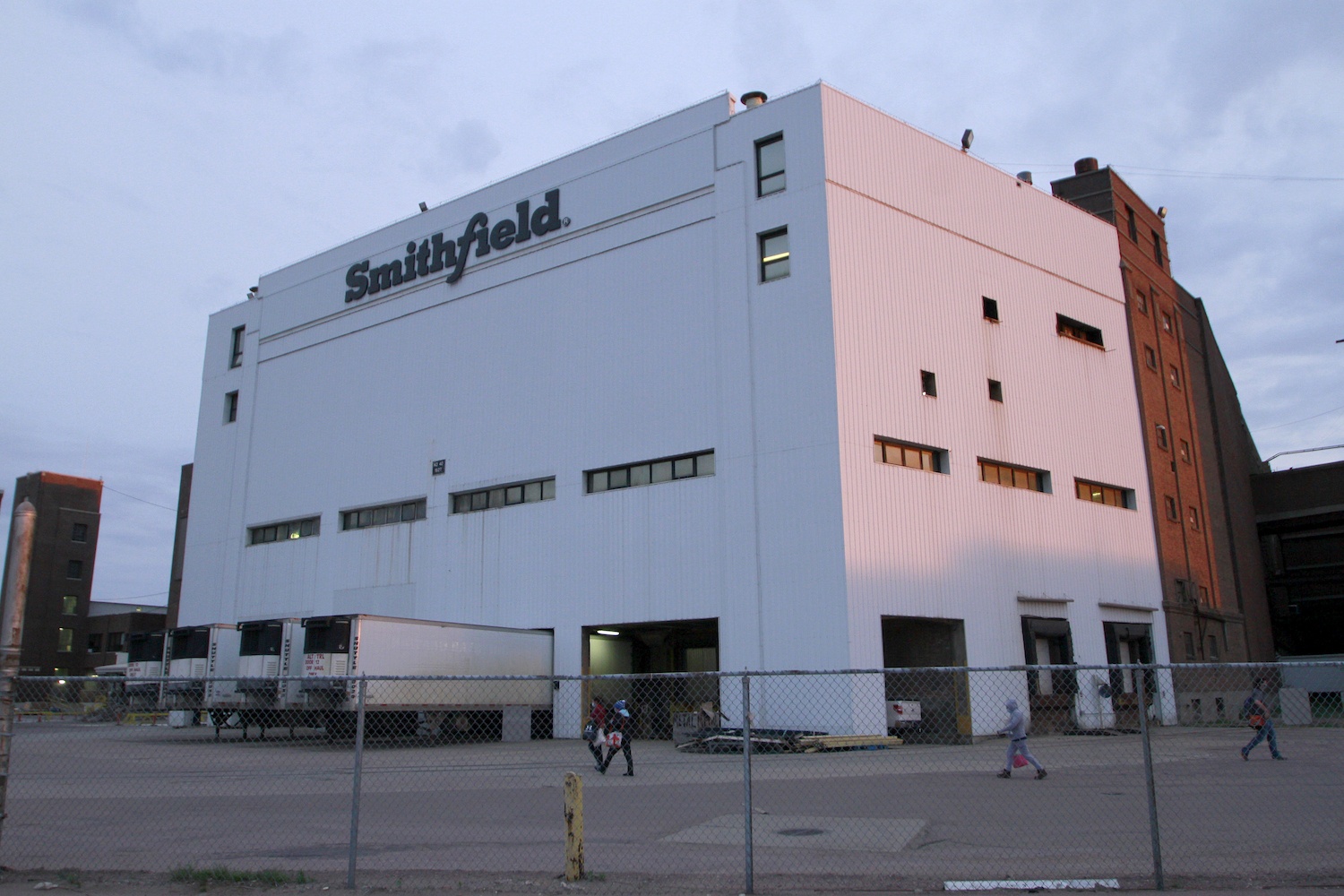Smithfield’s salaried office workers were able to keep their work stations safe, while those on the cutting floor didn’t share that luxury.
When the Centers for Disease Control and Prevention officials visited Smithfield Foods’ meatpacking plant in Sioux Falls, South Dakota, earlier this year, they came away with an unsurprising conclusion.
This article is republished from The Midwest Center for Investigative Reporting. Read the original article here.
Departments in the plant where workers had to crowd together to do their jobs had more cases of COVID-19 than departments where workers could space out, according to the CDC’s August report.

Three departments where people worked within six feet of others on the production line accounted for about two-thirds of all cases:
- Harvest, where pigs are stunned and slaughtered
- Cut, where the pork is initially cut up
- Conversion, where the pork is refined into a finished product
The CDC report also noted a difference between the salaried employees in an office setting and the hourly workers on the production line.
Salaried employees could adjust their work stations to maintain social distancing so not as many contracted the virus, according to the CDC report.
“These differences highlight the importance of engineering controls (e.g., physical barriers) and administrative controls (e.g., cohorting employees) in mitigating the risk for SARS-CoV-2 transmission in meat processing facilities,” the report reads.

As of last week, the Smithfield plant had the second-largest reported outbreak in the country, according to tracking by the Midwest Center for Investigative Reporting.
Almost 1,300 workers tested positive for COVID-19 and four died, according to the U.S. Department of Labor, which fined Smithfield about $13,000 for failing to keep its workers safe.






